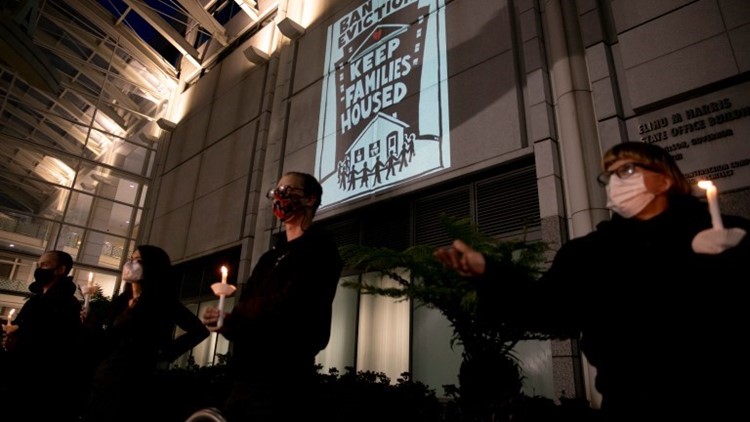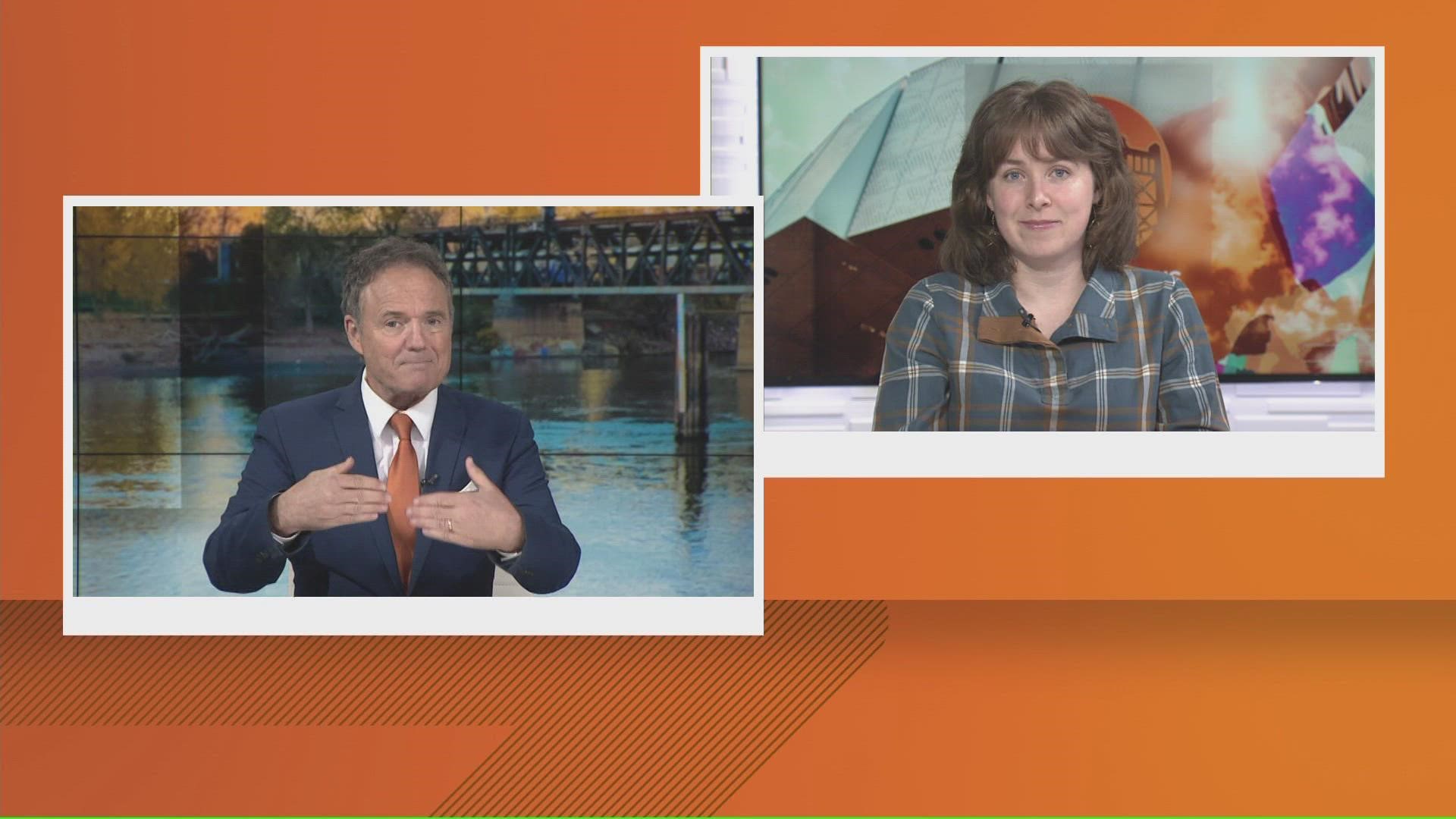CALIFORNIA, USA — This story was originally published by CalMatters. Lea este artículo en español.
A new survey finds tenants are having a hard time accessing the state’s $2.6 billion emergency rent relief, which is contributing to the slow distribution of California’s marquee program to thwart a potential statewide eviction tsunami.
With one month until the end of the state’s eviction moratorium, the survey of 177 tenant advocates released Tuesday found that tenants had trouble applying in languages other than English and Spanish, and that a lack of digital proficiency and access to documents showing income losses due to COVID limited tenants’ ability to apply.
Tenant advocates also reported that tenants who cannot contact or who face harassment from their landlords were effectively locked out of full rent relief, since the state’s plan requires landlords to forgive 20% of rental debt in order to receive the remaining 80%. Tenants in that circumstance can still avoid eviction by paying 25% of their rental debt.
All those factors have contributed to California’s slow disbursement of $2.6 billion in rent relief program. Californians have applied for $473 million but only $20 million has been paid out so far, according to the state, which is launching a number of changes to simplify the application process and get more money out the door faster.
Risk of displacement
“This is a once-in-a-generation crisis, and we need to treat it like one,” said Melissa Jones, executive director of the Bay Area Regional Health Inequities Initiative, one of the report’s sponsors.
Their concerns echo complaints from tenants who were unable to receive rental relief via either first-come, first-serve or lottery systems.
“The state is telling me they value the roof over my head far more than they value my life,” said Jaylynn Bailey, a Pasadena film and television writer who has fallen behind on rent during the pandemic.
“We are at risk of displacement now, and we have been for every day since April 2020.”
Bailey said that, despite her access to a printer and scanner, and a successful application for unemployment insurance payments, she struggled with the rental relief application in Los Angeles County and had to ask a local resource center for help. In the meantime, she believes her landlord has hired a private detective to monitor her activity.
“Now we’re just waiting for the (eviction order) coming on July 1,” Bailey said.
More languages, less documentation
The state has pledged to fix some of those issues as early as this week. Russ Heimerich, spokesman for the California Business, Consumer Services and Housing Agency, said application websites in Chinese, Korean, Vietnamese and Tagalog will be available as soon as this week.
The state also intends to issue a second, simpler rental relief application this week, Heimerich said, that would cut down the time it takes to fill out the forms from approximately 90 minutes to 45 minutes.
Perhaps most importantly, the new application asks for less documentation to show pandemic-related income losses. Heimerich said the state would rely on attestations of income losses, similar to what the state did for people on unemployment during the pandemic. Tenant advocates say documentation has been a major hurdle for renters.
“We’re still going to check that we don’t have any inmates applying or any dead people applying,” Heimerich said, referencing extensive fraud that has contributed to a backlog of claims at the Employment Development Department.
Proposed expansion
In perhaps the most significant news for tenants behind on their rent, Gov. Gavin Newsom this month proposed increasing the reimbursement from 80% to 100%, which would no longer require landlord participation in rent relief.
“We would take the landlords who refused to participate out of the equation,” Heimerich said.
The proposal still needs legislative approval, as will budget trailer bills to extend the eviction moratorium, which ends on June 30.
This article is part of the California Divide, a collaboration among newsrooms examining income inequality and economic survival in California.
CALmatters.org is a nonprofit, nonpartisan media venture explaining California policies and politics



